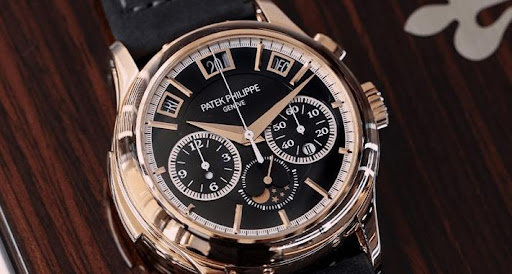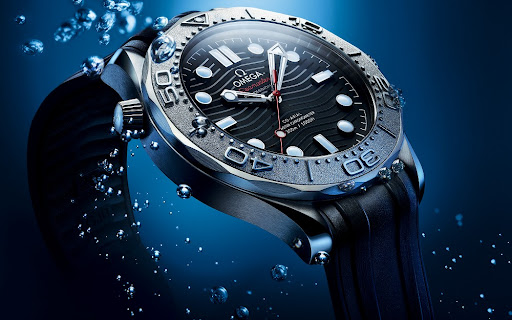Introduction
In the world of luxury watches, two names rise above the rest, embodying the pinnacle of precision, craftsmanship, and innovation: Omega and Patek Philippe. These two Swiss watchmaking giants have not only set the bar for what high-end timepieces should be, but they have also created a rich tapestry of history, design, and technological breakthroughs that continue to captivate collectors, enthusiasts, and connoisseurs alike. Whether it’s Omega’s pioneering role in space exploration or Patek Philippe’s commitment to creating the most intricate and sophisticated complications, these brands have forged legacies that extend far beyond mere timekeeping.
This article delves into the brand history, innovation, cultural influence, and the distinctive traits that set Omega and Patek Philippe apart. By examining the journey of these two legendary brands, we will explore how they have shaped the watchmaking industry, why they remain at the top of the luxury watch world, and what makes them timeless in every sense of the word.
Chapter 1: The Genesis of Omega and Patek Philippe
1.1 Omega: The Beginning of an Icon
Founded in 1848 by Louis Brandt in Biel/Bienne, Switzerland, Omega’s early days were marked by precision and reliability, two qualities that would become core to the brand’s DNA. Originally named Louis Brandt & Fils, the company started by assembling pocket watches using parts sourced from various suppliers. The watches were known for their precision, which helped the brand quickly gain a reputation in Swiss watchmaking.
In 1880, Louis Brandt’s sons, Louis-Paul and César, took over the business, and in 1894, they unveiled their first in-house movement, the Omega Caliber 19-ligne. The name Omega was chosen because it signified the “ultimate” or the “end of the alphabet,” symbolizing the brand’s commitment to producing the best and most precise watches.
Omega’s early involvement in precision timekeeping led to the brand becoming the official timekeeper for the Olympic Games in 1932, solidifying its reputation for accuracy and precision. Over the years, Omega’s timepieces became known for their technological innovations, including the introduction of the Co-Axial escapement in 1999, which reduced friction within the movement and increased its longevity.
Today, Omega continues to be at the forefront of watchmaking, thanks to its pioneering efforts in space exploration, diving watches, and innovative movements. Omega’s iconic models, such as the Speedmaster (the first watch worn on the moon), the Seamaster (a staple in diving watches), and the Constellation series, have become symbols of excellence.
1.2 Patek Philippe: A Heritage of Tradition
Patek Philippe’s origins go back to 1839 when Antoine Norbert de Patek, a Polish watchmaker, founded the company alongside Jean Adrien Philippe, a French horologist known for his invention of the keyless winding mechanism. This groundbreaking innovation revolutionized watchmaking, moving away from the traditional stem winding method.
From its early days, Patek Philippe established itself as a symbol of luxury and elegance, focusing on creating highly complicated, handcrafted watches that reflected the brand’s commitment to excellence. In 1851, the company introduced its first wristwatch, a handmade masterpiece that would set the standard for the brand’s future.
One of the most significant aspects of Patek Philippe’s legacy is its focus on complications. The brand’s pieces often incorporate intricate mechanical features like minute repeaters, perpetual calendars, tourbillons, and chronographs. This dedication to crafting the most complicated and sophisticated timepieces earned Patek Philippe the title of “watchmaker to kings” and made it a preferred brand among royalty and aristocracy.
Patek Philippe has also been a leader in innovation, creating groundbreaking movements and complications that have set new standards in the watchmaking world. The Caliber 89, introduced in 1989, is still considered the most complicated wristwatch ever made, showcasing Patek Philippe’s commitment to perfection.
Today, Patek Philippe is renowned for creating some of the most expensive and coveted watches in the world. Its focus on tradition, heritage, and craftsmanship ensures that the brand remains synonymous with luxury, elegance, and sophistication.

Chapter 2: Omega vs. Patek Philippe: Distinctive Traits and Key Innovations
2.1 Omega: Pioneering Precision and Innovation
Omega has been at the forefront of watchmaking innovation, and its history is filled with groundbreaking achievements that have shaped the brand’s identity.
Co-Axial Escapement: A Technological Milestone
In 1999, Omega introduced the Co-Axial escapement, a revolutionary technology that reduces friction between the moving parts of the escapement, improving accuracy and reducing the need for frequent servicing. The Co-Axial escapement was a game-changer in mechanical watch movements, providing greater long-term reliability and extending the lifespan of the watch.
Master Chronometer: Setting New Standards
In 2015, Omega launched its Master Chronometer certification, a more stringent standard for precision and performance than the traditional COSC certification. The certification involves testing the watch for accuracy, magnetic resistance, and water resistance to ensure that it meets Omega’s exacting standards. The Master Chronometer is a mark of outstanding performance and has helped further cement Omega’s reputation as a leader in precision timekeeping.
Space Exploration and the Speedmaster
Omega’s involvement in space exploration is one of the most iconic chapters in its history. The Omega Speedmaster was the first watch worn on the moon during the Apollo 11 mission in 1969, solidifying the Speedmaster’s place as the “Moonwatch.” The Speedmaster continues to be a highly sought-after model, embodying Omega’s spirit of adventure and precision.
2.2 Patek Philippe: Tradition, Craftsmanship, and Complications
While Omega is known for its technical innovation, Patek Philippe is renowned for its timeless craftsmanship and dedication to mechanical perfection.
Complications and Masterpieces
Patek Philippe is perhaps best known for its complicated timepieces, which include some of the most intricate and challenging movements ever created. The brand’s Caliber 89, introduced in 1989 to mark Patek Philippe’s 150th anniversary, is considered one of the most complicated watches ever made, featuring 33 complications, including a perpetual calendar, minute repeater, chronograph, and world time function.
Perpetual Calendars and Minute Repeaters
Patek Philippe is a master of the perpetual calendar, a complication that automatically adjusts for months with less than 31 days and even accounts for leap years. Patek Philippe’s minute repeaters, which chime the time with a melody, are also regarded as some of the finest examples of mechanical watchmaking craftsmanship.
The Craft of Handcrafting
Patek Philippe’s commitment to handcrafting each watch with the utmost attention to detail is unparalleled. The brand’s Geneva Seal certification ensures that every Patek Philippe watch is made to the highest standards of finishing, precision, and quality. The brand’s attention to detail extends to the decoration of the movements, which are meticulously finished by hand, ensuring that each watch is as much a piece of art as it is a timepiece.
Chapter 3: The Cultural Influence of Omega and Patek Philippe
3.1 Omega: The Watch for the Adventurer and the Athlete
Omega’s cultural impact has been profound, especially in the worlds of sports and space exploration. The brand’s history is intertwined with some of the most significant moments in modern history.
- Space Exploration: Omega’s Speedmaster became the first watch on the moon during the Apollo 11 mission. This landmark achievement has cemented Omega’s reputation as a brand synonymous with precision and adventure. The Speedmaster remains a symbol of Omega’s spirit of exploration and innovation.
- The Olympics: Omega has served as the official timekeeper for the Olympic Games since 1932, further establishing its association with precision, performance, and excellence. Omega’s involvement in the Olympics has helped the brand maintain its connection to athletes and sports enthusiasts.
3.2 Patek Philippe: The Symbol of Luxury and Heritage
Patek Philippe’s cultural influence is most prominent within the realm of luxury and exclusivity. The brand’s timepieces are often seen as the ultimate status symbols, coveted by royalty, aristocrats, and the most discerning collectors around the world.
- Royal Connections: Patek Philippe has a long history of creating watches for royalty, including Queen Victoria, Prince Rainier III of Monaco, and the King of Saudi Arabia. The brand’s watches are often passed down as heirlooms, further cementing its status as a symbol of luxury and elegance.
- The Nautilus: Launched in 1976, the Patek Philippe Nautilus is one of the most iconic luxury sports watches ever made. Its unique design, created by Gerald Genta, has made it a highly coveted model among collectors, further enhancing Patek Philippe’s reputation for creating not just timeless but desirable timepieces.
Conclusion
Both Omega and Patek Philippe have left an indelible mark on the world of Swiss watchmaking. While Omega’s legacy is built on precision, innovation, and adventure, Patek Philippe’s history is rooted in luxury, craftsmanship, and the art of complicated watchmaking. The differences between the two brands lie not only in their approach to design and innovation but also in their cultural influence. Omega is the watch of explorers, athletes, and innovators, while Patek Philippe remains the watch of royalty, collectors, and those who appreciate the pinnacle of luxury and tradition.
As we look ahead, both Omega and Patek Philippe continue to inspire new generations of watch lovers, preserving their legacies while adapting to the needs of modern watch enthusiasts. Whether you’re a lover of space exploration or a connoisseur of complicated timepieces, these two Swiss houses represent the very best that watchmaking has to offer.





































